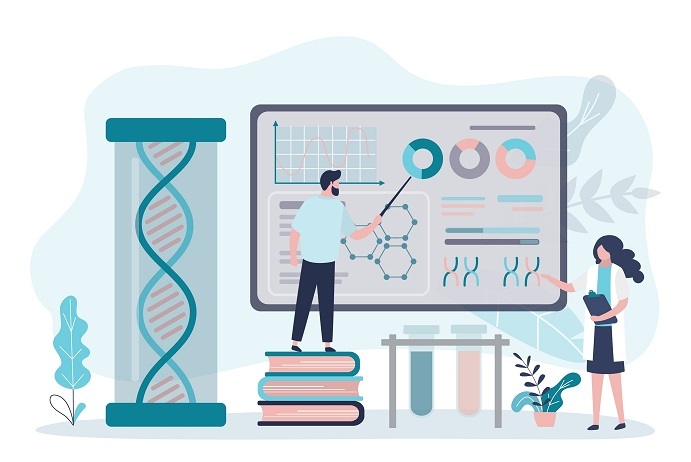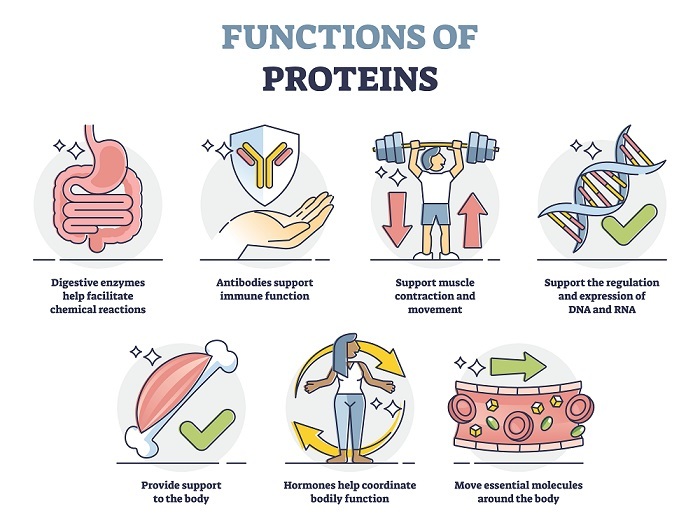
 Data Structure
Data Structure Networking
Networking RDBMS
RDBMS Operating System
Operating System Java
Java MS Excel
MS Excel iOS
iOS HTML
HTML CSS
CSS Android
Android Python
Python C Programming
C Programming C++
C++ C#
C# MongoDB
MongoDB MySQL
MySQL Javascript
Javascript PHP
PHP
- Selected Reading
- UPSC IAS Exams Notes
- Developer's Best Practices
- Questions and Answers
- Effective Resume Writing
- HR Interview Questions
- Computer Glossary
- Who is Who
Fundamentals of Biochemistry, Biocomputing, and Biostatistics
What is Biostatistics?
Biostatistics is the science which applies the statistics to a wide range of concepts in biology. Statistics mainly involves data collection, organization, analysis, interpretation and presentation.
Importance of Biostatistics
The Bio statistical science mainly deals with the development and application of most suitable methods for the following purposes.
Data Collection - Here the facts are expressed in quantitative form and for this the data is obtained from the primary and secondary sources.
Presenting the Collected Data - Data is presented in tabular form as a classification of data and through charts called charting of data.
Data Analysis and Interpreting the Results - It is carried out in 2 phases. First is based on the results of questionnaire built with the quantitative analysis of data and second one is based on the results of interview and focus on group discussion is a quantitative interpretation.
Decision Making Based on the Analysis - Here decision analysis is the process of making the decision based on research and systematic modeling of the research work.

Role of Biostatisticians
All the Biostatisticians work closely with the research team. Three major roles of biostatisticians are included in the following areas.
Research Planning - Helps in conducting the surveys or guides in designing an experiment before the collection of data.
Descriptive Tools and Inferential Statistics - Using the statistical methods and the techniques analyzes the data.
Statistical Consideration and Developmental Big Data - Presents and interprets the results to researchers and other influential decision makers.
Fundamentals of Biochemistry
Biochemistry is a discipline of science that seeks to explain life at the molecular level.
There are 6 elements of life which are a part of every compound and without these there are no living things.
Carbon.
Hydrogen.
Oxygen.
Nitrogen.
Phosphorous.
Sulfur.
With the use of these 6 elements of life, there are mainly 4 types of organic macromolecules or biomolecules formed on whom the survival of all the living organisms depends.
Nucleic acids.
Carbohydrates.
Proteins.
Lipids.
Significance of the biochemical science relates to its capacity to explain living system at the molecular level. So understanding the physical structure and the chemical reactivity of the individual molecules like DNA helps us to gain knowledge on how these molecules combine together to form a larger organelle within a cell such as mitochondrion. Then we are prepared to understand how cells combine to form a functioning organ and finally an intact organism like human.
Molecular Structure and Functions of Biomolecules
The study of biochemistry also involves the development and use of consistent terminology while representing the structures and functions. Structure of molecules are mainly represented in 3 ways.
Structural Formula: It includes only atoms and bonds present in the molecule. Does not convey any information about the 3D structures.
Ball and Stick Model: This view allows us to see not only the atoms and bonds connecting them but also gives us idea as how they are arranged in 3D space. Limitation of this model is it cannot provide information on size of the molecule.
Space-filling Model: in this model we can see not only the 3D arrangement of atoms but also get better idea of size of the molecule.
Structure of the four main biomolecules might be represented by all or some of these 3 ways.
Functions of Biomolecules
The four important macromolecules and their functions within the cells are discussed below.
Carbohydrates - It is a long chain of glucose molecules made up of 3 elements C, H and O and its main function in the body is to store energy. Some of the secondary functions of these carbohydrates is seen in building parts of the cell membrane etc.
Proteins - The raw materials for building these macromolecules are usually gets from the food we consume. Proteins are involved in most of the major works within a cell. These are in chain form made up of sequence of amino-acids. There are 20 amino-acids that exist in nature.

Nucleic Acids - DNA and RNA are the 2 types of nucleic acids present in all the living organisms. Functions of these nucleic acids in the body is to store the information for building a life.
Lipids - These are also called as fats and its main function is to form membranes in an organism to separate both inside and outside environments. These are important to maintain homeostasis which is one of the important characteristics of life. Lipids have a secondary role to store energy in the form of fat.
Introduction to Biocomputing
Biocomputing is the science of using the biological substances to carry out the computational tasks such as the data storage in devices like silicon chips. First discovered with the thought whether the DNA could be used for computational tasks.
This is an interdisciplinary subject which includes Biochemistry, molecular biology, genetics, computer science, mathematics, biology, chemistry and physics. Biocomputing is like a tool used by the scientists to provide theoretical data by exploring the biological problems involved with the nature's two building blocks named DNA and proteins.
Biocomputing is mainly classified into 2 types based on its components.
Uses genetic algorithms.
Uses neural networks.
Why Biocomputing?
Limitations of silicon technology are as follows
Circuit integration dimensions.
Clock frequency.
Power consumption.
Heat dissipation.
Helps in solving biological problems in stipulated period of time.
The types of bio computers used for solving many problems are biochemical computers, biomechanical computers and bioelectrical computers.
DNA Computing
DNA computers are a type of molecular or biochemical computers which uses the DNA for solving complex problems. These computers use the enzymes that can react with the DNA strands and causes chain reactions.
Applications
DNA chips
Cryptography
Genetic programming
Medical applications
Conclusion
Biochemistry is the domain of large biomolecules which includes proteins, lipid, carbohydrates and nucleic acids. Every living cell operates with the interactions between macromolecules like enzymes, receptors, proteins and the DNA or RNA.
Hence Biochemistry is simply the study about cells at the molecular level. Biocomputing are also the systems which uses the biological models or its concepts to perform the computational tasks in solving the biological problems. Biostatistics is the application of statistical approach and its methods in biological areas like experiments, research studies, health services etc.

